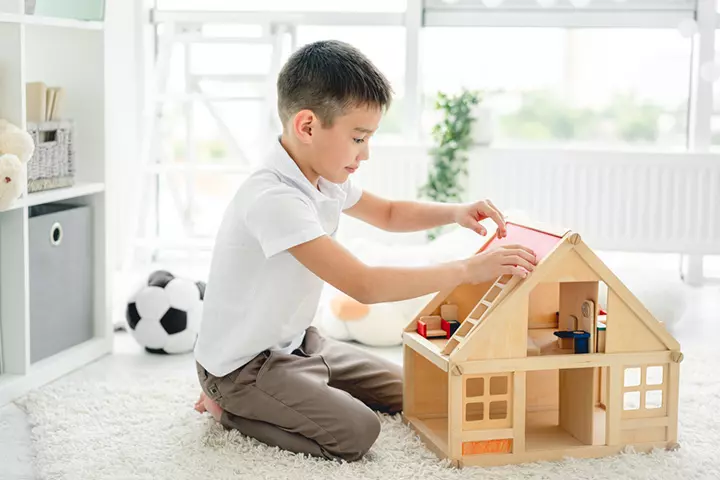
Image: Shutterstock
Parenting comes with its fair share of challenges, and navigating through your child’s behavior can be a rollercoaster ride. While it’s natural to be concerned about certain behaviors, not every quirk or phase warrants alarm. In this article, we’ll address some common child behavior issues that might make you raise an eyebrow, but don’t necessarily require immediate worry. Understanding when to let certain behaviors run their course can provide you with a sense of relief and confidence as you guide your child’s growth. Read on to understand better!
1. Using Upsetting Words
Children are sponges for absorbing language, and sometimes they might pick up words that sound unsettling. Whether it’s a sudden use of strong language or a phrase they’ve heard from peers or media, it’s important to remember that this is often a case of exploration rather than a long-term issue. Address the matter calmly, explaining why certain words are not appropriate, and offer alternative ways for them to express themselves.
2. Acting Out Toward Peers
Image: Shutterstock
Children, especially in their early years, are learning the ropes of social interaction. If your child occasionally displays aggressive or challenging behavior towards peers, it’s not necessarily indicative of a deep-seated problem. It’s often a developmental phase as they learn to share, communicate, and manage their emotions. Gently guiding them towards better ways to express themselves can help them navigate these early social dynamics.
3. Head Banging
While it might seem concerning, head banging is a behavior that some children adopt as a way to self-soothe or express frustration. Usually occurring during bedtime or naptime, it’s typically a phase that fades as they grow older. If the head banging persists or escalates, consider discussing it with a pediatrician, but remember that in most cases, it’s a transient habit.
4. Biting
Image: Shutterstock
Discovering that your child has bitten someone can be unnerving, but biting is often a phase that toddlers go through as they grapple with their emotions and communicate their needs. It’s crucial to address the behavior, explaining that it’s not acceptable and encouraging alternative ways to express themselves. Most children outgrow this phase as they develop better communication skills.
5. Eating Issues
Picky eating or sudden food aversions are common occurrences in childhood. Remember, your child’s taste buds are still developing, and their preferences may change frequently. Avoid turning mealtime into a battle and instead offer a variety of healthy options. If their eating habits drastically change or lead to nutritional concerns, consulting a pediatrician or a registered dietitian can provide valuable guidance.
6. Overwhelming Emotions And Tantrums
Image: Shutterstock
Navigating the world of emotions can be a challenge for toddlers and young children, often resulting in the well-known temper tantrums. Although these outbursts can be exasperating, they’re actually a typical aspect of development. Tantrums serve as a means for children to convey their emotions when their verbal abilities are still emerging. By guiding them towards constructive methods of managing their feelings and offering a secure environment for self-expression, you’ll likely witness a gradual decline in the frequency and intensity of these tantrums.
7. Attachment To Comfort Items
If your child has a favorite blanket, stuffed animal, or other comfort item that they’re unwilling to part with, it’s usually nothing to worry about. These items serve as security blankets, helping your child navigate new experiences and manage anxiety. They typically outgrow this attachment as they gain confidence and develop other coping mechanisms. In fact, these comfort items can be a source of comfort during times of stress or change.
8. Exploration Of Gender And Identity
Image: Shutterstock
During their growth, children naturally explore different facets of their identity, including gender roles. Experimenting with activities, toys, or clothing typically associated with the opposite gender is common and often a display of curiosity. It’s not necessarily a sign of a deeper identity concern. Encouraging their exploration within a safe and open environment can contribute to their healthy self-development.
When To Seek Professional Help
While many behaviors are part of a child’s developmental journey, there are instances when seeking professional guidance is crucial. If you notice persistent patterns of aggression, severe withdrawal, significant changes in mood or behavior, or developmental regressions, it’s important to consult a pediatrician or a child psychologist. These professionals can provide insights, assessments, and strategies to address any underlying concerns.
Parenting is a voyage filled with discoveries, and not all child behavior issues should send you into a panic. While some behaviors might appear unusual or worrisome at first glance, many are just passing phases that are part of your child’s growth and development. By understanding when to intervene and when to allow certain behaviors to naturally subside, you can navigate the challenges of parenting with more confidence and less stress. Always remember that open communication, patience, and seeking professional help when necessary are essential tools in your parenting toolkit. Let us know in the comments your ways of dealing with such behavior in your child!
















